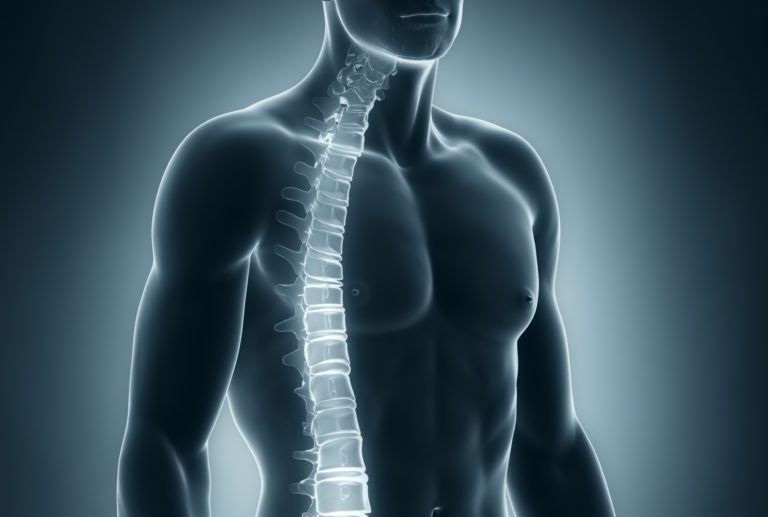A car accident, sudden fall, or traumatic blow to the spine can fracture or dislocate vertebrae causing significant pain and permanent injury. The National Spinal Cord Injury Statistical Center (NSCISC) estimates that approximately 17,000 new spinal cord injuries are recorded in the US each year. The NSCISC also determined that the first year of care, depending on the severity of the injury, ranges from $347,000 to upwards of a million dollars in medical expenses. Estimated lifetime costs range anywhere from $1.5 million to $4.7 million. These costs include lost wages, healthcare costs, and living expenses.
According to a study published in the US National Library of Medicine, “expedient delivery of medical and surgical care during this critical period can improve long-term functional outcomes, engendering the concept of ‘Time is Spine.’” An important step to lessening the permanent impact of spinal cord injuries is to diagnose and treat the problem as soon as possible. In some unfortunate situations, patients aren’t diagnosed soon enough, resulting in delayed care and a higher risk for permanent damage.
Luckily, with further advancements in modern medicine and knowledge of these life-altering issues, patients with severe spinal cord injuries are making miraculous recoveries. Here are some examples of the recent advancements in spinal cord injury treatment:

Link Between Spinal Cord Recovery and High Blood Pressure Discovered
A recent Fast Company article points to data in failed experiments as the reason for potential breakthroughs in spinal cord injury treatment. The complexity of the injuries can create problems in finding one, uniform model of treatment that is agreed upon and practiced by all doctors and medical professionals. Thanks to the data compilation from years of studies, doctors have now discovered a link between long-term recovery and high blood pressure during initial surgeries.
A team of neuroscientists and statisticians at the University of California San Francisco (UCSF) partnered with the software firm Ayasdi to comb through roughly $60 million worth of failed medical experiments for under $1 million. The data pointed out relationships that hadn’t been studied to this point and, even though the experiments failed overall, valuable information had been unearthed resulting in at least one medical breakthrough.
Ayasdi’s software searches for patterns in data “without human supervision (or bias) before rendering the results as a network diagram of variables for further analysis.” Scientists and statisticians are then able to rework and rethink the data that had initially been thought of as useless. As the article points out, the discovery of high blood pressure’s negative impacts on long-term recovery has real, tangible benefits for those suffering from spinal cord injuries.
Spinal Cord Epidural Stimulation (scES) Treatment Added to Rehab
Another recent article describes a medical breakthrough that took many years of diligent work. After a significant motorcycle accident resulting in a broken neck at the age of 28, Andrew Meas couldn’t move his legs. When typical rehabilitation attempts didn’t seem to work, researchers from the University of Louisville used spinal cord epidural stimulation (scES) paired with Andrew’s rehab.
After the scES was implanted over Andrew’s spinal column, electrical stimulation runs through the lumbosacral enlargement during training. A pulse generator was implanted in Andrew’s abdomen to assist in the process. With 44 additional months of rehabilitation and scES, Andrew can now move his lower extremities without assistance from nurses or scES. Senior researcher Susan Harkema told Science Alert that “Activity-dependent plasticity can re-establish voluntary control of movement and standing after complete paralysis in humans even years after injury.”
Susan continued, “This should open up new opportunities for recovery-based rehabilitation as an agent for recovery, not just learning how to function with compensatory strategies, even for those with the most severe injuries”
After all of the training sessions and scES use, Andrew could stand on one leg, fully extend his knees into a standing position, and stand without assistance.
Human Stem Cell Therapy Induces Spinal Cord Regeneration in Animals
A Reuters article examined another breakthrough for spinal cord procedures. Using a paralyzed rat, scientists at Technicon Institute of Technology completed the procedure. The rat had a spinal cord that had been completely severed weeks before and, after the pioneering surgery, the rat began walking.
Professor Shulamit Levenberg told Reuters: “In this project we managed to induce spinal cord regeneration following complete injury to the spinal cord, and this was to the extent where the animal that was totally paralyzed started to walk again and also regained sensory perception.”
The stem cells coming from a human mouth were placed on a biodegradable scaffold, and then placed on the injured section of the spinal cord. “This effectively created a pathway circumventing the injured area so that instructions from the brain could reach the rest of the body,” stated the article.
To date, a complete recovery from a severed spinal cord has yet to be accomplished for humans. This groundbreaking procedure could pave the way to studies on humans, but the researchers at Technicon say it is still to early to determine if it would have the same effect.
About 40% of the animals that received the treatment saw positive results.
“Our vision is that in the surgery room there will be frozen cells that once a patient comes after full transection of the spinal cord, these cells could be transplanted to the lesion site,” Levenberg told Reuters.

The field of spinal cord treatment is advancing all the time, providing new hope for people who have suffered spinal cord injuries as the result of someone else’s negligence. However, a doctor’s failure to use new, fully proven techniques appropriately could result in further damage and be the basis for a medical malpractice claim.
Our experienced medical malpractice attorneys can evaluate your spinal cord injury case resulting from an accident. We will look at how the injury happened and determine if you may be entitled to compensation. Also, we can assess if your medical professional should have done more to help with your spinal cord injury or did not provide you with high quality treatment.
